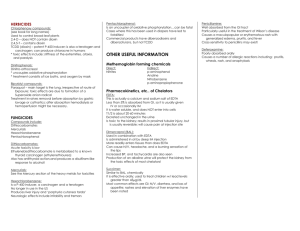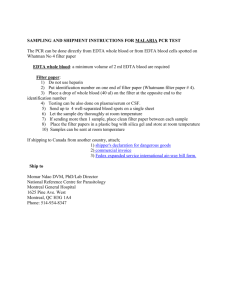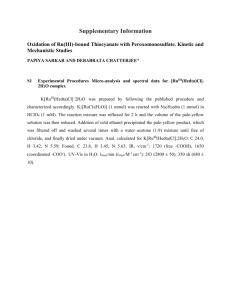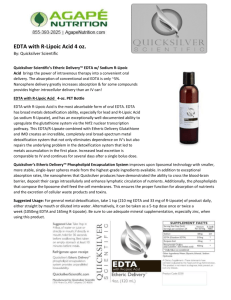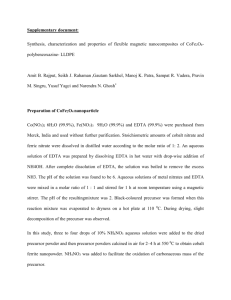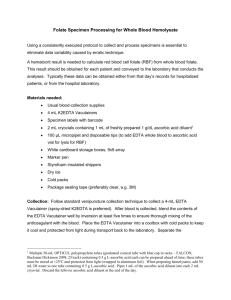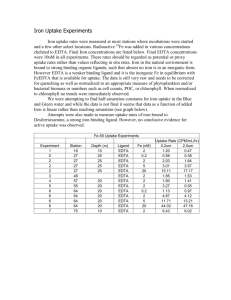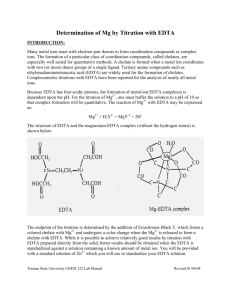Denaturing HPLC
advertisement
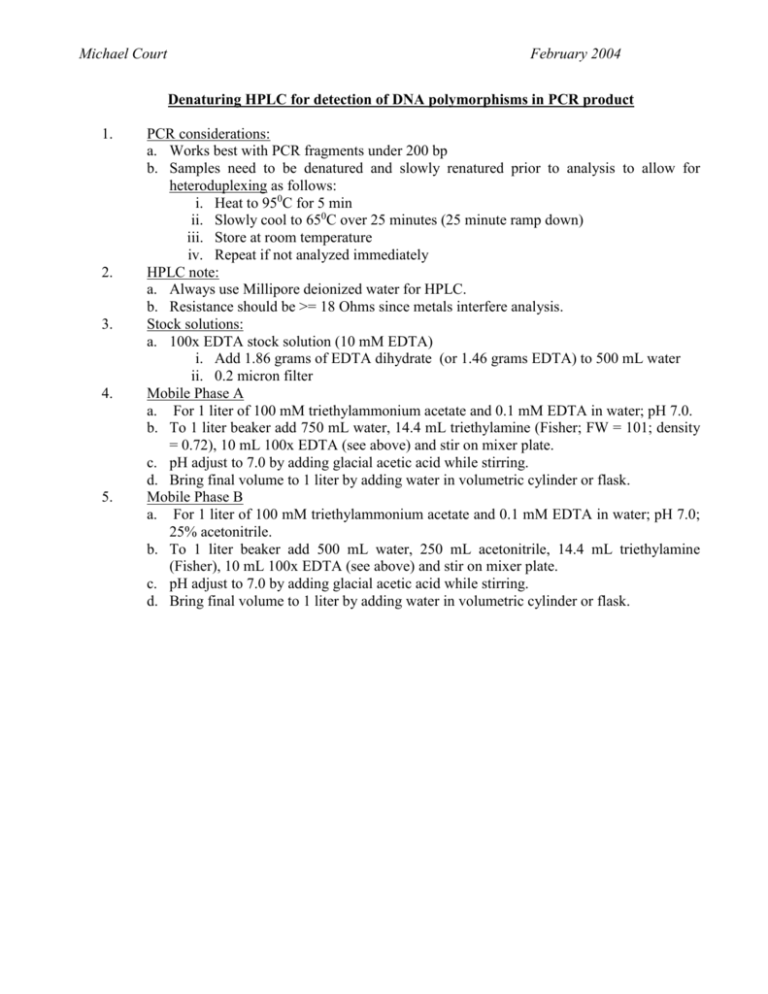
Michael Court February 2004 Denaturing HPLC for detection of DNA polymorphisms in PCR product 1. 2. 3. 4. 5. PCR considerations: a. Works best with PCR fragments under 200 bp b. Samples need to be denatured and slowly renatured prior to analysis to allow for heteroduplexing as follows: i. Heat to 950C for 5 min ii. Slowly cool to 650C over 25 minutes (25 minute ramp down) iii. Store at room temperature iv. Repeat if not analyzed immediately HPLC note: a. Always use Millipore deionized water for HPLC. b. Resistance should be >= 18 Ohms since metals interfere analysis. Stock solutions: a. 100x EDTA stock solution (10 mM EDTA) i. Add 1.86 grams of EDTA dihydrate (or 1.46 grams EDTA) to 500 mL water ii. 0.2 micron filter Mobile Phase A a. For 1 liter of 100 mM triethylammonium acetate and 0.1 mM EDTA in water; pH 7.0. b. To 1 liter beaker add 750 mL water, 14.4 mL triethylamine (Fisher; FW = 101; density = 0.72), 10 mL 100x EDTA (see above) and stir on mixer plate. c. pH adjust to 7.0 by adding glacial acetic acid while stirring. d. Bring final volume to 1 liter by adding water in volumetric cylinder or flask. Mobile Phase B a. For 1 liter of 100 mM triethylammonium acetate and 0.1 mM EDTA in water; pH 7.0; 25% acetonitrile. b. To 1 liter beaker add 500 mL water, 250 mL acetonitrile, 14.4 mL triethylamine (Fisher), 10 mL 100x EDTA (see above) and stir on mixer plate. c. pH adjust to 7.0 by adding glacial acetic acid while stirring. d. Bring final volume to 1 liter by adding water in volumetric cylinder or flask.




